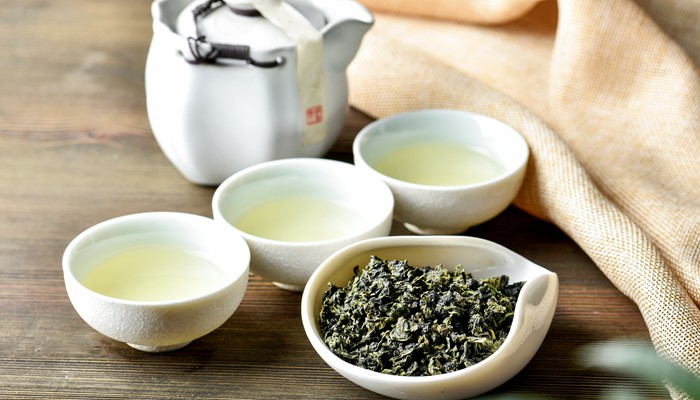Is there caffeine in Tieguanyin oolong tea? The origin story of Tieguanyin and the description of its taste and taste
Tieguanyin is a Chinese oolong tea from Anxi County, Fujian Province. Fujian is China's tea province, but also the birthplace of China's famous tea. China's white tea such as silver needle, white wood pool, black Zhengshan small species, famous Wuyi rock tea such as red robe, are produced in Fujian. Tieguanyin is a kind of Chinese oolong tea and also the name of tea varieties. Like all real Tieguanyin tea, it is made from tea trees. It can be made from Tieguanyin varieties or other tea varieties. Some Tieguanyin teas may even be a mixture of different tea varieties. Authentic Tieguanyin oolong tea should come from Anxi. Today, this tea is also produced in other regions. Although it may be similar in shape and taste, it is not considered authentic. There are other teas that are very similar to Tieguanyin, such as Burr Oolong Tea, Huangjingui Oolong Tea or Benshan Oolong Tea. What makes this tea unique is that it is a very broad tea family. They may be more or less oxidized, more or less baked, and have different flavors. What they have in common is that their leaves are small, tightly rolled balls, without any branches. For example, when you brew Taiwanese mountain tea, you will see a bud and several leaves on the branch. Tieguanyin contains only leaves. Tieguanyin can be harvested in spring, summer, autumn and winter. Winter harvests are rare. The best tieguanyin is harvested in spring and autumn. The origin of Tieguanyin history about the origin of Tieguanyin tea, there are several legends. It is believed that this tea was discovered about 300 years ago during the Qing Dynasty in China. Legend has it that a poor farmer in Anxi discovered an empty temple with a statue of Guanyin inside. He spent several days cleaning and tending the temple until one day the goddess Quan Yin appeared in his dream and told him where to find his reward. He was rewarded with a tea tree, which brought him prosperity after planting a tea tree in his garden. Tieguanyin tea is a kind of oolong tea. Oolong tea contains antioxidants, caffeine, amino acids and other compounds. It's somewhere between green tea and black tea. You can guess the degree of oxidation by looking at the color of tea leaves and tea liquids. Green and bright solutions are less oxidized, while darker solutions are more oxidized.

Drinking Tieguanyin can help lose weight, regulate bad cholesterol,[2] fight certain types of cancer,[3] improve alertness, prevent heart disease, increase bone density,[4] prevent dental caries, reduce oxidative stress, regulate blood sugar and strengthen the immune system. Read the benefits of oolong tea here. Caffeine content and other oolong tea, tieguanyin also contains caffeine. It is difficult to say how much caffeine is contained in a cup of tea. The amount of tea depends on many factors, from the tea variety to the processing method and the way you brew it. However, Tieguanyin's brewing method may extract more caffeine than you would normally get from green tea. The same tea leaves are usually used until they have no flavor, and even then they can be cooked cold for hours. Taste and texture Tieguanyin can be roasted, aged or unroasted, very fresh and green. There are two main types of Tieguanyin tea-traditional or Chuan Tong Tieguanyin and modern or Qing Xiang Tieguanyin. Modern style Tieguanyin has a bright emerald to bright yellow colour with floral and creamy flavours. This style is the most popular style nowadays. Traditional Tieguanyin is more oxidized and baked. Smooth taste, with roasted and fruity aromas, the aroma is heavier and more complex. Tieguanyin is available in a variety of flavors-roasted, nutty, creamy, fruit, roasted, honey, floral, fresh, vegetable and mineral. In general, less roasted and oxidized tea will have fresher and more plant flavor.
Important Notice :
前街咖啡 FrontStreet Coffee has moved to new addredd:
FrontStreet Coffee Address: 315,Donghua East Road,GuangZhou
Tel:020 38364473
- Prev

Introduction to Oolong Tea: introduction to the producing area, basic taste characteristics and brewing guidelines of Tieguanyin
Tie Guanyin (Tieguanyin, literally translated as Iron Goddess) is a good variety of oolong tea. The degree of fermentation is between 50-70%, with both the fragrance of green tea and the mellowness of black tea. Tieguanyin can be divided into spring tea, summer tea, autumn tea and winter tea. The comprehensive quality is generally good in spring and autumn. There is a saying that spring tea wine
- Next

Does Yum sell coffee in China? Yum China and Italian coffee LAVAZZA will open 1000 coffee shops.
When it comes to selling coffee, Yum China is also ambitious. Yum China and LAVAZZA, the founder of espresso, have announced the opening of 1000 stores by 2025, according to media reports. Yum China and Lavazza have accelerated their expansion in the coffee market through a joint venture, and it is reported that the two sides will jointly inject US $200 million into the joint venture to provide funds for future development. In addition
Related
- Being chased out of the rain in front of Starbucks?! Store: Sheltering from rain under umbrellas poses a safety hazard
- The white moonlight has changed?! Lucky launches "Big Winter Pear American"
- Hand-brewed coffee three-stage method, high-sweet and universal brewing method to share! What does the high sweet water level of hand-brewed coffee mean?
- What is the difference between raw, refined and full espresso coffee? How to extract espresso and taste good?
- A complete list of coffee bean names and their meanings! What is Yejia Shefi coffee? Where is Mantelin coffee?
- What grade does Arida Manor Kaduai coffee beans belong to? What treatment is Arida ASD slow anaerobic sun exposure?
- The milk tea cup becomes smaller?! Overlord Tea Girl launches a new "Return to Yunnan" series
- Accused of selling counterfeit and high-priced coffee beans! Well-known boutique coffee brand "Oukelao" bowed and apologized!
- How to make espresso dumplings? Can I eat coffee and glutinous rice balls together?
- Save the unformed and stagnant powder cakes in one second! What is the problem with stagnant water in the powder bowl of the espresso machine?

